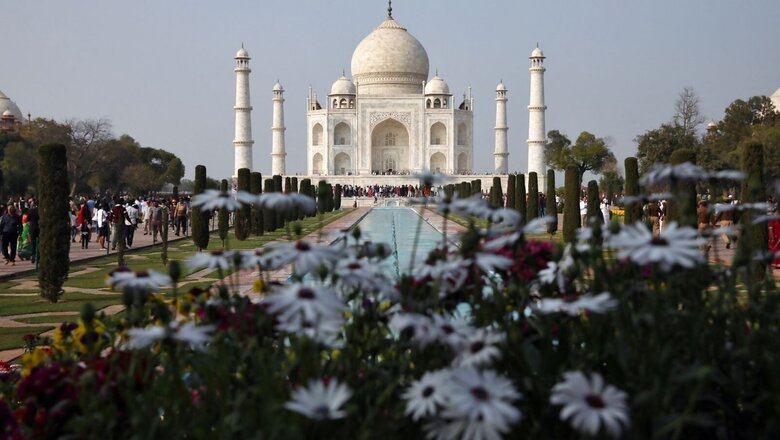
views
Amid the Allahabad High Court dismissing a plea seeking a “fact-finding inquiry” into the history of the Taj Mahal, top Archaeological Survey of India officials said the claims of the petition seeking opening up of “22 permanently locked rooms as they could be housing Hindu idols from ancient times” was wrong on both counts, a report said.
One, these rooms officially called “cells”, are “not permanently closed” and were only recently opened for conservation work, ASI officials told the Times of India, adding that all records scrutinised till now over the years “have not pointed to the presence of any idols”.
The report quoted a senior official privy to the restoration work done just three months ago as saying that, “various records and reports that have been reviewed till now haven’t shown the existence of any idols”.
According to those with the most insider access to the Taj, there are over 100 cells in various portions of the mausoleum complex that have remained inaccessible to the public for security and safety reasons, and none of them have yielded any such findings as alleged in the plea.
“The petitioner’s claim of 22 rooms being permanently locked is factually incorrect as conservation work – including filling of cracks, re-plastering and anti-ageing treatments – are periodically done. In fact, the most recent work cost us Rs 6 lakh,” a senior ASI official told the Times of India.
Another senior ASI official stated that 100 public cells are located in the basement, higher levels of the main mausoleum, corner ‘burjs,’ the four minarets, inside the baolis (near the mosque), and on the Chameli floor on the east, west, and north sides of the monument. Apart from these, several areas of the region’s other world heritage monuments, such as Agra Fort and Fatehpur Sikri, have been closed to the public for years due to security concerns.
On Wednesday, the Lucknow bench of justices D K Upadhyay and Subhash Vidyarthi had pulled up the lawyer of petitioner Rajneesh Singh, who is the media in-charge of the BJP’s Ayodhya unit, for filing the PIL in a “casual” manner and said it cannot pass an order under Article 226 of the Constitution in the matter.
The article empowers a high court to issue to any person or authority in the area under its jurisdiction orders or writs to enforce the fundamental rights. The bench said that it was a non-justiciable issue that cannot be decided or gone into by the court.
The bench said that the petitioner could not point out as to which of his legal or constitutional rights were being infringed. Dismissing the plea as misconceived, the bench pulled up the petitioner’s counsel Rudra Pratap Singh over and again for moving the PIL without properly conducting legal research work.
Read all the Latest India News here



















Comments
0 comment